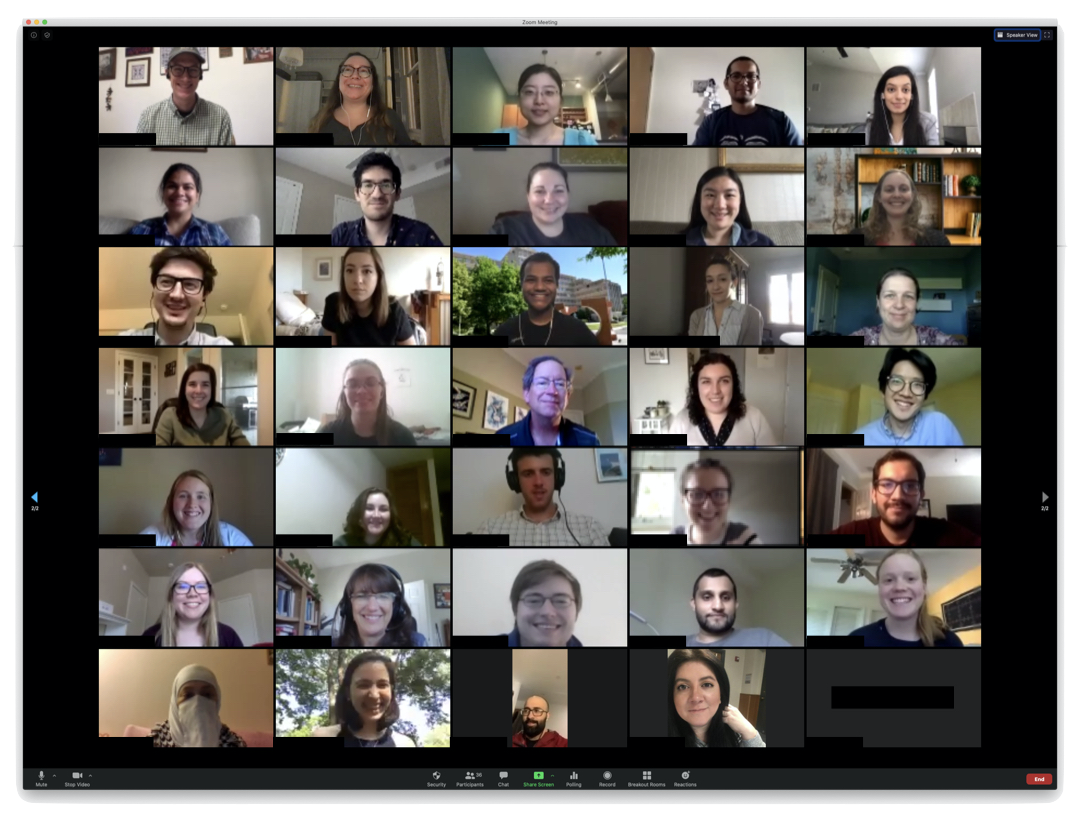Preparing to Teach 2020: What did we learn?
This post was contributed by Sara Stoudt (@sastoudt). Thank you Sara!
On May 15th and 20th the third Preparing for Careers in Teaching Statistics and Data Science Workshop was held. 37 graduate students and recent PhDs gathered (remotely of course) to learn from Allan Rossman (Cal Poly), Mine Çetinkaya-Rundel (University of Edinburgh, Duke, RStudio), Jo Hardin (Pomona), Beth Chance (Cal Poly), Lucy D’Agostino McGowan (Wake Forest), and Ulrike Genschel (Iowa State).
I was one of these lucky students, so I want to share the wealth. In this post I’ll outline some tips I took away from each session. Want more info? Slides and video recordings from each session can be found here.

Implementing GAISE recommendations - Allan Rossman
New emphases in the GAISE revision expand the “teach statistical thinking” recommendation to include:
- “Teach statistics as investigative process of problem-solving and decision-making.”
- “Give students experience with multivariable thinking.”
Provide students with a dataset and ask them to define a research question that can be answered using a certain statistical test. This has two benefits. You allow students to more organically investigate a dataset and you get to see what is interesting to students and what their domain interests are.
Want some ideas for building examples? Check out Allan’s blog, Ask Good Questions.
Teaching focused career opportunities - Jo Hardin
Even if it isn’t necessary at your institution, grant writing is a good time for reflection. You’ll be forced to synthesize your research program.
When considering options across liberal arts colleges, teaching universities, and at research universities it is important to ask what the expectations are in the particular role and what is valued as scholarship (what “counts” towards promotion, etc.).
How do you get one of these jobs? Evidence that you have your own reserach ideas is helpful, even if this takes the form of less traditional products (e.g. blog posts).
Opportunities in statistics education research - Beth Chance
There is an important foundation for statistics education research in psychology research and within mathematics education research. However, we still need to consider what is different about teaching statistical reasoning.
Since you are already teaching, think about how can you collect data at the same time. This way you can research your own teaching practice (i.e. classroom-based research).
NSF Improving Undergraduate STEM Education grants support “curricular innovation, experimentation, and implementation” at different levels (from proof of concept to a full scale launch).
Your first year as faculty - Lucy D’Agostino McGowan
Get to know the norms within both your university as a whole and your department in particular. What meetings are usually attended? What service roles do new professors usually take on? What type of visibility matters?
Aim for harmony (as opposed to elusive “balance”) between teaching, research, and service. Block out time in your calendar for each and stay accountable to that time.
Find peers and mentors within and outside your new department and institution to support you in your transition from student to peer.
Teaching remotely - Mine Çetinkaya-Rundel
There is a tradeoff between the benefit of building community synchronously and the potential unfairness and inequitability of syncrhonicity.
Be consistent and judicious in your choice of online tools. Just because a tool is free to use doesn’t mean it is free to learn. Plus your students have other classes with potentially even more tools to learn.
Even if your lectures are pre-recorded ahead of time, record a “state of the union” once a week to debrief and respond to feedback in what feels more like real-time.
Teaching intro statistics - Ulrike Genschel
We want students to become “critical consumers” of statistics. Throughout the course, we can show them the common ways that statistics can be misleading (e.g. confusions between correlation and causation, misleading data visualizations, etc.).
There are two parts to problem solving: the research question level and the data level (e.g. are there contaminated values or outliers? are necessary assumptions met?). Both parts can be taught as part of the investigative process stressed in the GAISE report.
The level you teach at should be the same as the level you assess at. Consult Bloom’s (revised) taxonomy when thinking about how to assess learning.
Teaching intro data science - Mine Çetinkaya-Rundel
Taking advantage of peer review can help scale a large class.
Break material into modules with different case studies. This adds variety and also ensures that if a student doesn’t connect with a particular dataset’s context, they get another opportunity to engage later on.
Consider incorporating discussions of ethics within each module rather than just in its own (e.g. ethics of scraping, what gets “counted” as a country in maps).
In conclusion…
Thank you to the speakers and organizers! I think I can speak for the group and say we all learned a lot. Thanks to the combination of this workshop and the accompanying eCOTS conference I certainly feel much more prepared to teach.

